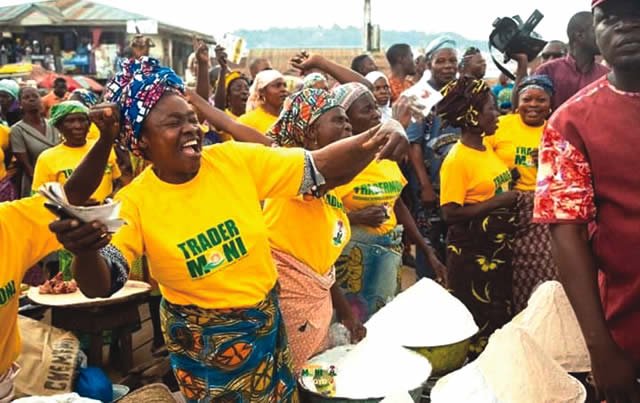The Chief Executive Officer (CEO) of Centre for the Promotion of Private Enterprise (CPPE), Dr. Muda Yusuf has questioned the effectiveness of Tradermoni and other social schemes introduced for the masses as the Federal Government’s spending to sustain them hits N36.3 billion.
Recent data obtained from the National Social Investment Programme (NSIP) handled by the Federal Ministry of Humanitarian Affairs, Disaster Management and Social Development, has it that no less than N36.3 billion has so far been disbursed to 2.3 million beneficiaries under Tradermoni, N-Power programme, National Home Grown School Feeding Programme and the Conditional Cash Transfer schemes.
As seen in the data, the beneficiaries all received between N50,000 and N300,000 under the government empowerment programme.
“The GEEP programme in the last four years has provided incremental loans of between N10,000 and N300,000 to about 2.3 million beneficiaries who are mainly traders, artisans, enterprising youth, agricultura] workers, and other micro-services providers.
“A total of 2,678 clusters have been engaged across the farms, trade groups and markets along with a total of 4,988,926 enumerated and verified applicants, from which the programme was able to successfully disburse funds to 2.3 million beneficiaries between 2016 and 2019.
“The beneficiaries’ cash disbursed so far sums up of N36.3 billion, with 2.3 million beneficiaries and 2.7 million candidates on the waiting list,” the data read.
Reacting to the data, Yusuf, a former Director-General of the Lagos Chamber of Commerce and Industry (LCCI), said the impact of the schemes had not been felt as expected economically, adding that hence, they should be interrogated, as he expressed doubt if the beneficiaries were paying pack the loans.
His words: “First of all, let’s interrogate the sustainability of this programme. This fund is supposed to be a loan, now how much of it has come back? What is the default rate?
“What happens with many of these things is that they go around, gather people and give them the money. This fund is supposed to be revolving and so how much of it has come back? What is the default rate? My guess is that the default rate will be extremely high. So the first thing is to tackle the issue of sustainability.
“Also, the agencies should be able to give us the metrics for measurement of impact. They gave out funds, what has been the impact? You don’t measure impact by how much you have disbursed. The CBN does a lot of that.”













